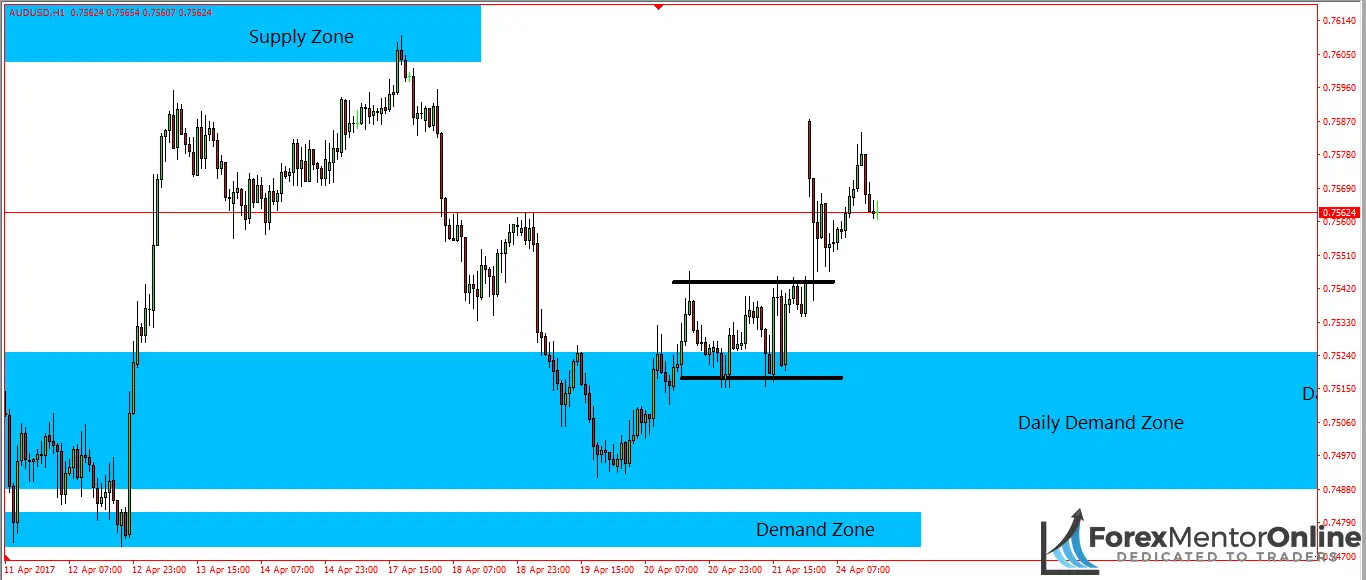EUR/USD – Large Gap Higher Pushes Market Into Supply Zone
The response to the French general election over the weekend has had a dramatic effect on all the major currency crosses apart from GBP/USD. The effect it’s had on EUR/USD was one of the biggest, with a huge gap higher taking place when the market opened last night. The gap higher has pushed the market through the supply zone that formed from the drop at the end of last week, and into a daily supply zone that formed at the end of March.

For now I suggest you continue watching what the market does over the next few days. The election isn’t over yet, so we may see more dramatic movements take place before the end of the week. Getting trades placed to take advantage of these movement may be possible, but it all depends on what price action we see form and where the market moves.
USD/JPY – Gap Through Supply Zone
Just like EUR/USD saw a similar sized gap take place on USD/JPY last night due to the general election results over the weekend. This gap has caused the market to move through the supply zone we were watching for entries short at the end of last week, but has so far not caused it to move into the daily supply zone created by the drop on the 11th April.

AUD/USD – Moving Higher After Breakout From Consolidation
The French election also caused a gap to occur on AUD/USD, but it was much more subdued when compared to what we saw on USD/JPY and EUR/USD. The gap caused the market to breakout of the consolidation which was taking place on AUD/USD at the end of last week (marked with the lines), and the market has continued to move higher throughout today, with some bearish candles that formed a couple of hours ago now pushing the market down.

A sharp move out of the zone will be a signal a move back to the highs is going to take place, but a move which isn’t sharp and consists of mostly small bullish candles will be a sign another drop will occur, so we’ll have to monitor the situation closely over the next few days to see what going to happen.
Hi, forexmentor, As you said both in EUR/USD and USD/JPY there is a gap to push the market move through the supply zone, is it possible that the bank traders placed the sell trades there and the gap makes them to close the trades with losses?
I mean is it possible that when the price suddenly move against bank traders’ expectation with a long distance, so the bank traders have trades to stop loss?
I’m not sure at the minute Joe, it’s possible but for the most part the majority of the banks trades are placed at the point where we see predominate swings form. The supply zones that form during downswings don’t form from the bank traders placing a large number of trades, so it’s possible that whatever trades had been placed to cause the zone to form had been closed before the gap took place, although there is now way for this to be confirmed until the market has broken 40 – 50 pips past the high of zone.
Hi, forexmentor, thank you for you reply. I still have some questions.
What is “predominate swings”?
Do you mean that most part the majority of the banks trades are placed at the reverse point of the down trend or up trend?
The gap in EUR/USD and USD/JPY charts have been more than 40-50 pips, so you mean bank traders have closed their trades before the gap? Or the gap result in the trades closing with losses?
Yes, the swing low or high created when the market reverses is always classed as the predominate swing, as it’s the point where the bank traders would have got the majority of their trades placed to make the market reverse. The banks traders either got buy trades placed before the gap occurred, or already had sell trades open at a price higher than that at which the gap caused the market to rise. I’m still not sure which one it is at the minute, hopefully the price action we see form this week will give us some more clues.